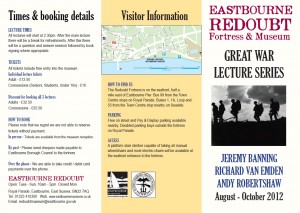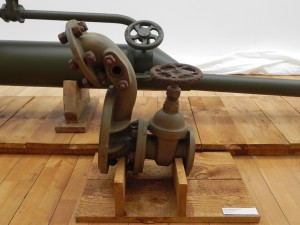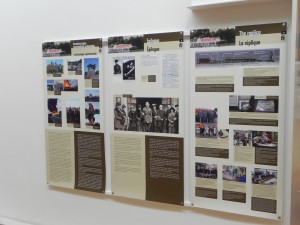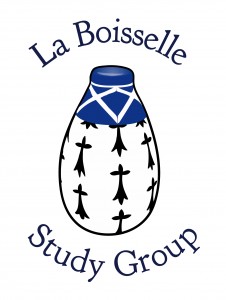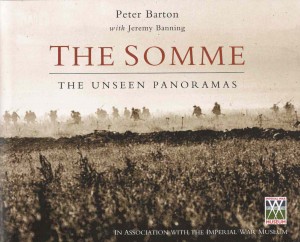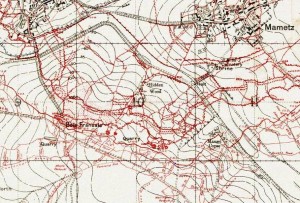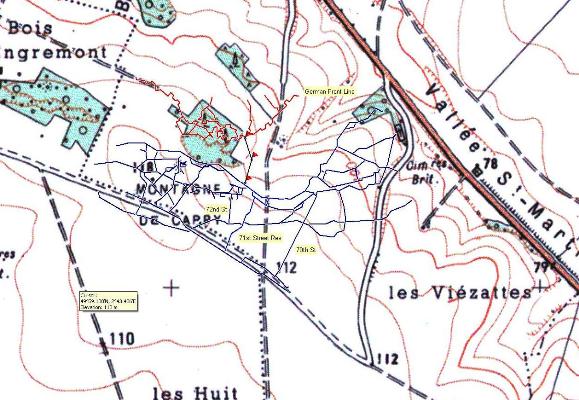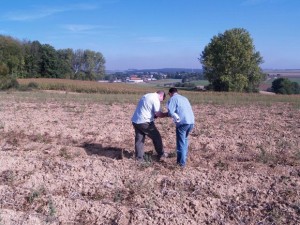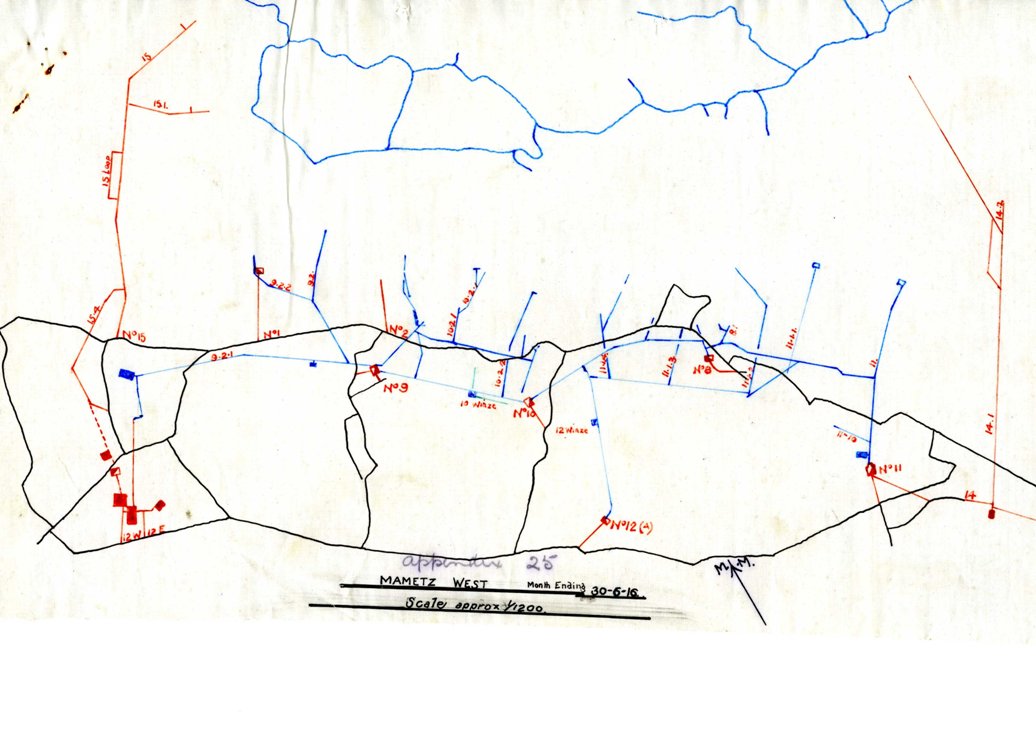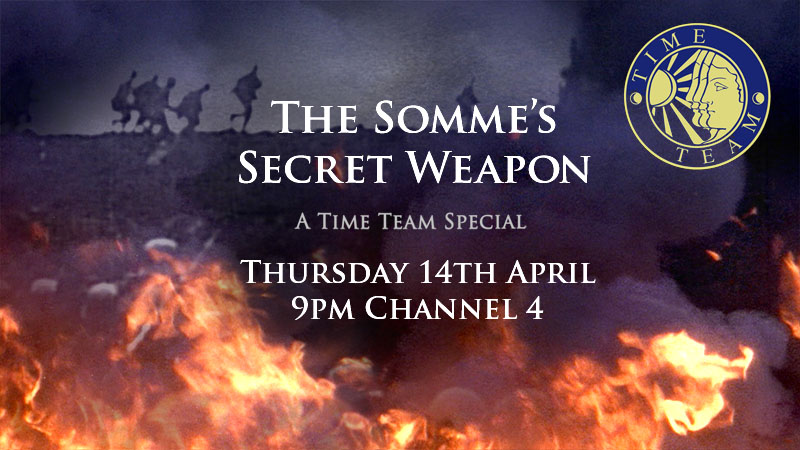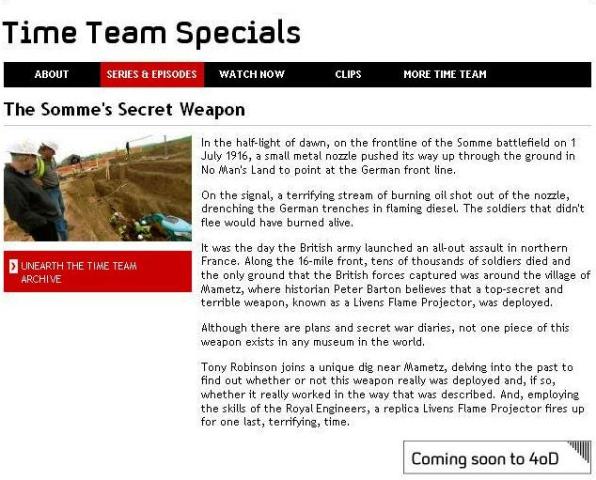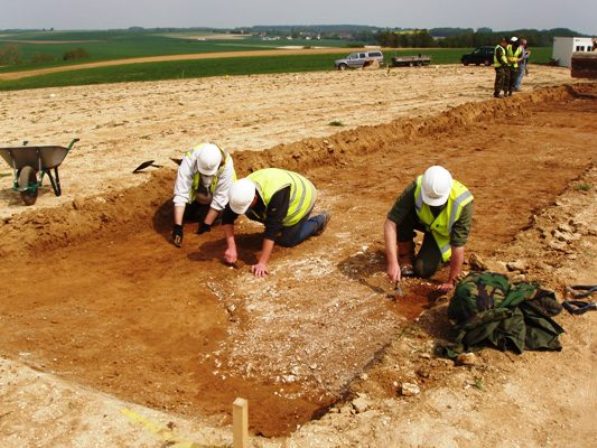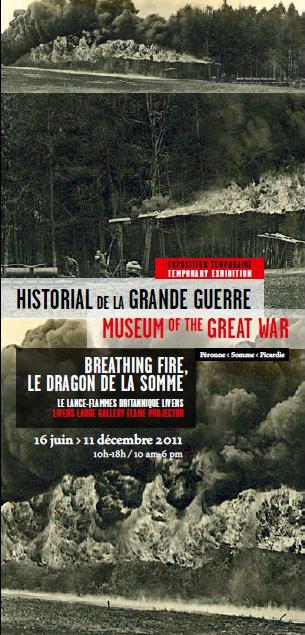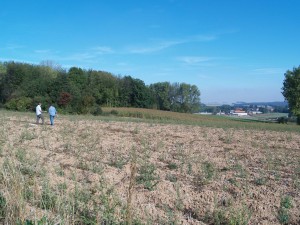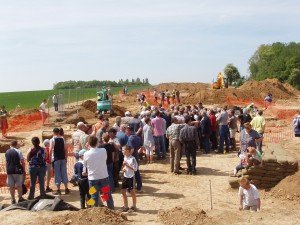Posts Tagged ‘archaeology’
Eastbourne Redoubt Fortress & Museum – my lecture on 18 August 2012
I am back in Bristol after a delightful weekend spent in Sussex. On Saturday I gave a lecture entitled Somme Archaeology: The Glory Hole and the work of the La Boisselle Study Group at Eastbourne Redoubt Fortress & Museum. Despite it being a boiling hot day and the lure of the sea only a few yards away it was standing room only by the time I began speaking in one of the Redoubt’s (thankfully cool) casemates. My talk focussed on the La Boisselle Study Group’s work since June 2011, showing images from the British tunnel system as well as images of surface archaeology and artifacts. I spoke about the actions of the French in autumn 1914 with focus on the capture of the Granathof by the 118th Infantry Regiment on Christmas Eve 1914. British occupation of the ‘Glory Hole’ was also covered with especial mention of underground action by 179 and 185 Tunnelling Companies, RE. I was able to show the current state of excavation and explain the plans for the next buy ambien cheapest tranche of work in September/October. This includes potential exploration of the British tunnel system at the 80ft level.
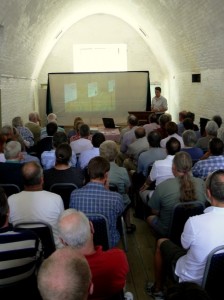 After an hour’s lecture there was a tea break which was followed by a further 25 minute Q&A session. It was good to see friends there, especially Richard Dunning, owner of the Lochnagar Crater. My grateful thanks to Ryan Gearing for organising the series of lectures, Keith Ross (ex-Royal Sussex Regiment) for his kind introduction and the Eastbourne Redoubt Fortress & Museum for providing such an inspiring venue.
After an hour’s lecture there was a tea break which was followed by a further 25 minute Q&A session. It was good to see friends there, especially Richard Dunning, owner of the Lochnagar Crater. My grateful thanks to Ryan Gearing for organising the series of lectures, Keith Ross (ex-Royal Sussex Regiment) for his kind introduction and the Eastbourne Redoubt Fortress & Museum for providing such an inspiring venue.
September’s lecture is to be given by Richard van Emden who, utilising his research material gathered for his book ‘The Quick and the Dead’ will be speaking about loss, grief and the families who are often forgotten when the fallen are remembered. Further details can be found here: http://www.eastbournemuseums.co.uk/Events.htm
On Saturday 18 August I will be the first speaker of the Eastbourne Redoubt Fortress & Museum Great War lecture series. My lecture “Somme Archaeology: The Glory Hole and the work of the La Boisselle Study Group” begins at 2.30pm. Ticket prices are £12.50 (Adult) with a concession price of £10 for Senior Citizens, Students and Under 16s.
Further details can be found here: http://www.eastbournemuseums.co.uk/Events.htm
Other speakers for September and October are my good friend Richard van Emden and Curator of the RLC Museum, Andy Robertshaw.
The lecture will showcase the work undertaken since June 2011, giving a history of French, German and British warfare (surface and subterranean) at La Boisselle from 1914-1916. I will also include many images previously unseen showing British tunnels dug in September-October 1915.
A pdf document with details of all three talks can be downloaded by clicking on the image below.
Today sees the public launch of our ambitious project at the Glory Hole in the village of La Boisselle at the heart of the Somme battlefields. We have been invited by the landowners to conduct a long-term archaeological and historical study into the site, one of the most unique still extant on the western front.
BBC Breakfast and News 24 are covering the launch with Robert Hall on live feed from the Somme. He will be interviewing members of the La Boisselle Study Group (Peter Barton, Simon Jones and Iain McHenry) as well as one of the landowners who has given us this tremendous opportunity. Owing to other commitments I am not able to be on site today with my colleagues but am enjoying seeing the reaction in the UK.
For all details of the project please see our website: http://www.laboisselleproject.com/
The detailed article on the BBC website can be read here: http://www.bbc.co.uk/news/magazine-13630203
Following the three week archaeological dig at Mametz last May I am pleased to report that a new exhibition is to open at the Historial, Peronne from 16 June 2011.
Below is the text from the flyer that has been produced. If you are on the Somme from June – December then please do visit the Historial for the chance to see this exhibition.
An exhibition that tells for the first time the story behind the Livens Large Gallery Flame Projector. Employed only ten times during the war – nine of which were on the Somme. The machine was 19 metres long, 40 centimetres wide, and weighed 2.5 tonnes. It was deployed from a tunnel beneath No Man’s Land by a specially-trained crew of seven, and fired a jet of flaming oil 100 metres long over the German trenches: the strangest, rarest and most horrifying weapon of the Great War.
In May 2010 historians and archaeologists excavated a section of the British trenches near the village of Mametz in search of the remains of a Flame Projector believed to have been buy cheap tramadol 100mg abandoned underground in late June 1916, just before the Battle of the Somme. The results were extraordinary, and for the first time for almost 100 years some of the original parts found in 2010 can be viewed alongside a specially-commissioned replica constructed by local students of vocational training centres.
A special screening of the film “Breathing Fire – Le Dragon de la Somme” will be shown at the opening of the exhibition, 16 June at 6pm.
 A downloadable version of this flyer in pdf is available by clicking on the link below. Please feel free to disemminate this information to all your friends and battlefield visitors. It promises to be a terrific exhibition and for many will be the first chance to see parts of the Livens Flame Projector, buried in the Somme mud for 94 years.
A downloadable version of this flyer in pdf is available by clicking on the link below. Please feel free to disemminate this information to all your friends and battlefield visitors. It promises to be a terrific exhibition and for many will be the first chance to see parts of the Livens Flame Projector, buried in the Somme mud for 94 years.
Breathing Fire – Le Dragon de la Somme exhibition
Exact date of transmission of the version for UK television still to be determined. I will post this when I find out the date from the production company.
I use the tools supplied by WordPress and Google Analytics to follow how visitors reach my site. I am seeing a large number of visitors searching for details on the archaeological dig and accompanying television documentary programme that followed our search for any surviving pieces of a Livens Large Gallery Flame Projector at Mametz in May 2010. As the site was open to visitors and there was no ban on photos I don’t think it is breaking any great secret to reveal that we DID find pieces of this amazing weapon. It was 19 metres long, 40 centimetres wide and weighed 2.5 tonnes. Its specialised team of seven ensured it fired three ten second bursts of flame for up to 100 metres and, perhaps most remarkably, this was fired from a tunnel or ‘Russian Sap’ dug specially under No Man’s Land.
At present (14 February) there is no broadcast date available for the UK or North American market. In the UK the programme will be broadcast as a Channel 4 Time to order tramadol Team Special. As soon as I know the broadcast date I will post the details so please check back or follow me on Twitter to be kept up to date.
In the meantime, a couple of pictures.
Update – 13 April 2011.
The Time Team Special will be shown on Channel 4 at 9pm on 14 April. A detailed description of the birth, evolution and structure of the project along with maps and images is now available here:
It has been reported in the Australian press (Sydney Morning Herald) that the body of an Australian soldier has been found on the Somme battlefield. The piece, entitled ‘Somme gives up the body of another Anzac’ dated 17 January tells of a the remains of a body being disturbed during digging for a drainage ditch near the infamous site of Mouquet Farm (also known as Moo Cow or Mucky Farm).
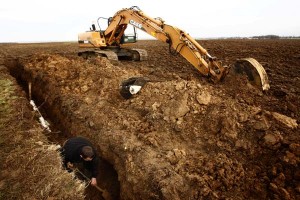
The site near Mouquet Farm where the Australian soldier's remains were found. Published online at http://www.smh.com.au/. Copyright Mike Bowers
The remains were excavated by local café owner Dominique Zanardi who was on site with the Mayor of Pozières. The report mentions that “there was no identity disc on the body, the soldier’s pistol holster is stamped “AUSTRALIA” and “WA””. I know I am not alone in advocating the involvement of qualified archaeologists using a professional approach. The issue of finding bodies on the battlefield has been going on for 90+ years but, following the precedent set by the dig at Fromelles, it is a very backward step to allow amateur excavation of these sites, however well intentioned the persons involved may be. The shocking pictures from the retrieval of fifteen British soldiers at Beauamps-Ligny are clear evidence of the need to employ professionals.
A follow-up piece entitled ‘Army moves to claim lost Digger‘ was published today which elaborates further on the next steps.

